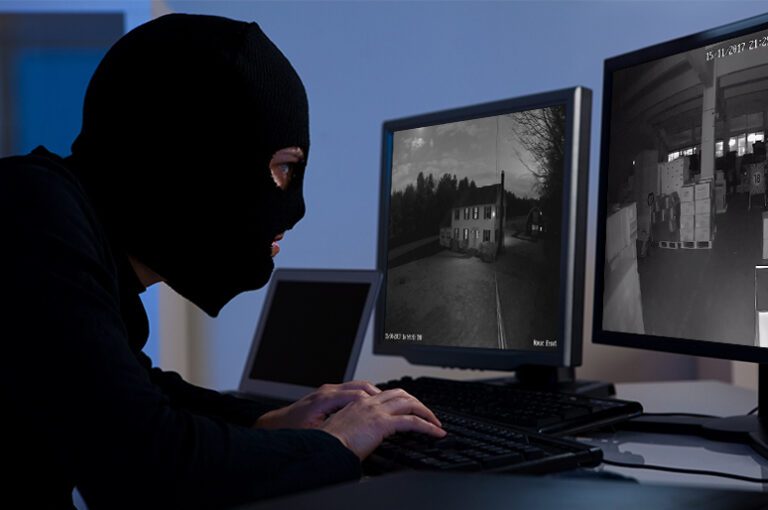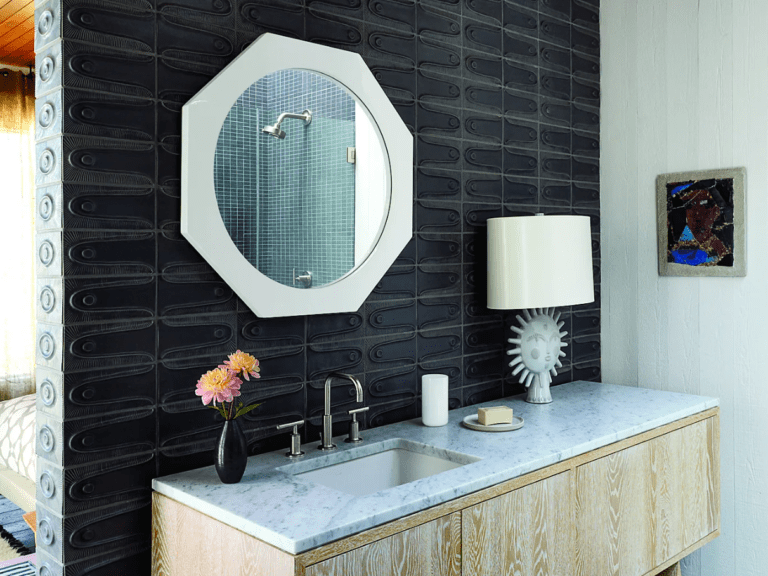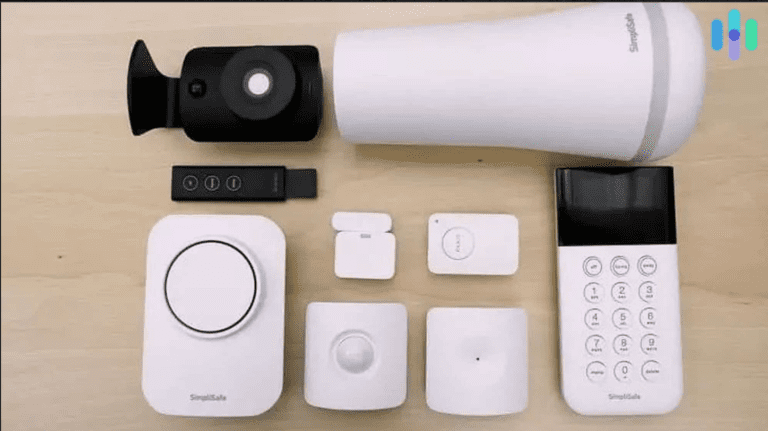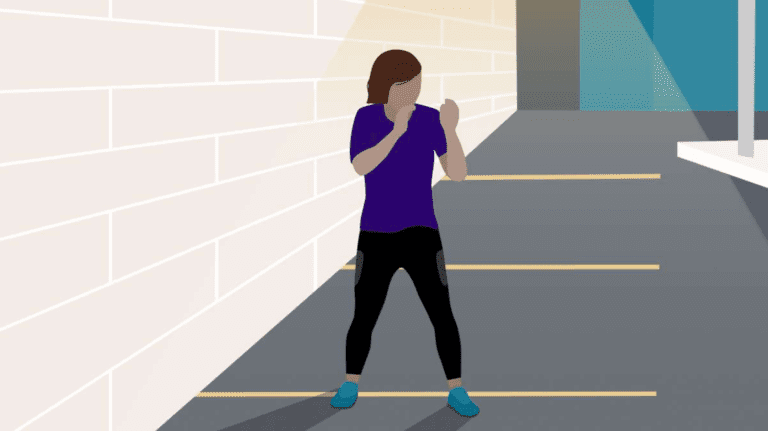Home Security Without Contract
Investing in a home security system for your home doesn’t end with buying the equipment. Most companies these days charge for professional monitoring, giving you emergency delivery in dire situations. Others also charge for features like cellular backup or cloud storage for security cameras.
Of course, if you want to skip the monthly fee, there are reliable options that you can turn to. However, keep in mind that without a monthly fee you’ll have to fend off thieves on your own. In the event of an emergency, the best no-monthly-fee security systems will alert you, but it’s up to you to call 911 if needed.
Home security and monthly fees don’t necessarily go hand in hand. Yes, many alarm companies require a monthly fee, but there are plenty of great home security options that don’t. We’ll walk through our favorite no-monthly-fee systems, but first, let’s make one thing clear: What are the monthly fees in home security?
Simply put, the monthly fee covers professional supervision. If you’re paying a monthly fee, your alarm company’s monitoring center will help protect your home. Take ADT as an example. ADT requires professional monitoring, and while that means paying a monthly fee, ADT will respond to alerts from your system.
With a no monthly fee system, you have to protect yourself in case of emergencies. The system might alert you to anything unusual, or even sound its siren, but that’s where it ends. You will assume full responsibility for self-monitoring of your home.

What to Look for in a No Contract Security System
No deal is no deal, right?
not so fast. When choosing a no-contract security system, you’ll want to look at monthly pricing, equipment cost and features, and backup options to help determine the best deal.
Features of no contract security system:
- No contract.
- Purchase of front-end equipment
Contactless security systems vary considerably in terms of installation policies, moving policies, and monitoring options. But you never have to commit to anything long-term, and you’ll always own your stuff.
In contrast, systems with contracts usually require a minimum of three years of equipment. However, you don’t always have to buy your stuff up front. You can finance it and spread the cost over a series of monthly fees.
Also, many no-contract systems are DIY. This means you will install them yourself versus having a professional install them for you.
We can learn from this that the monthly fee is not so bad, but in some cases, you can do the monitoring yourself. However, to make it work, you need to choose the right system with the right features to make things easier for you. Here’s a handy checklist to help you get started.
- Price and quality of goods
- Self-monitoring tools available at no monthly fee (smartphone controls, push notifications, etc.)
- Options to upgrade to professional supervision down the line
Using this checklist, we narrowed the field down to the four no-monthly-fee security systems we think are the best.
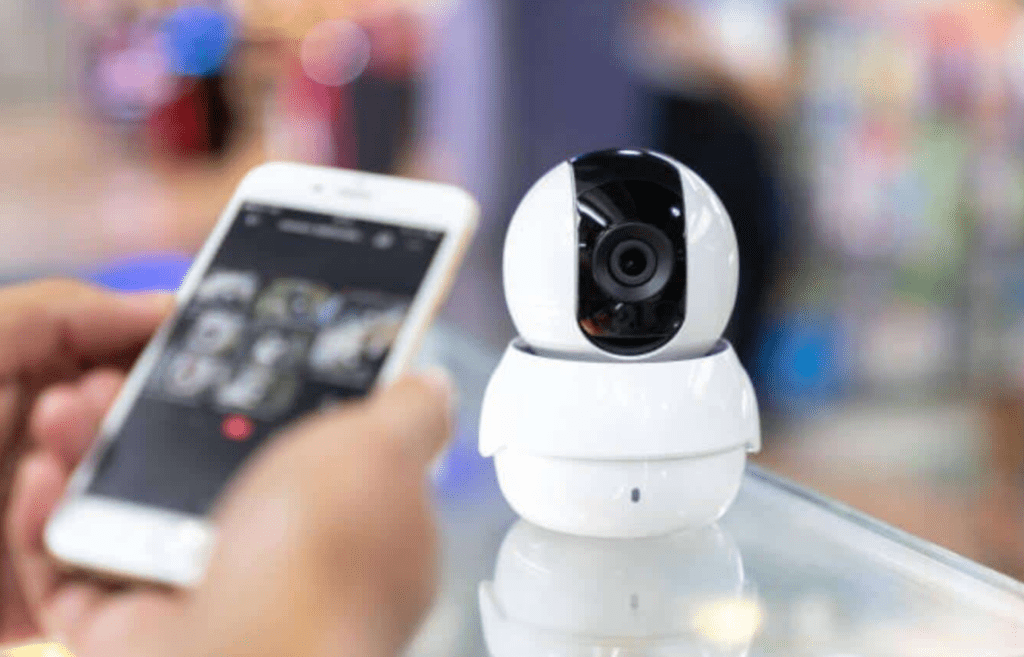
SimpliSafe Home Security System
How we review
With no monthly fees and professional monitoring, you’ll need a reliable security system built with quality components. That’s exactly what SimpliSafe offers.
SimpliSafe builds its own hardware, making it one of the best DIY home security systems out there. You’ll install the system yourself (professional installation is available for $79), but in our experience, the process is smooth enough that you can be up and running in minutes. As for the quality of the hardware, it is undeniable: they are strong and durable. We have had no signs of breaking up for years.
What do we like?
- cheapness
- Remote control
- DIY installation
- Tenant friendly
Which we don’t like.
- No mobile alerts without paid plans.
- No person is identified on indoor cameras.
- Can’t download videos to your phone without a paid plan
- Kit required for external camera.
Equipment and monitoring options
Basic SimpliSafe devices protected us from intruders, but we also had options to improve our internal video surveillance and environmental protection. For example, we used SimpliSafe equipment to connect to motion-activated cameras and smoke detectors. We controlled our equipment and checked the feeds whenever we wanted, though, and from wherever we were in the world. While we decided to do self-monitoring for free, SimpliSafe offers professional monitoring for a very reasonable price of around $17.99 or $27.99 per month.
| Feature | Free plan | Cloud storage for 1 camera | Cloud storage for up to 10 cameras | Standard plan | Interactive plan |
| Price per month | $0 | $4.99 | $9.99 | $17.99 | $27.99 |
| Livestreaming | Yes | Yes | Yes | Yes | Yes |
| Professional monitoring | No | No | No | Yes | Yes |
| Environmental monitoring | No | No | No | Yes | Yes |
| Cellular connection | No | No | No | Yes | Yes |
| Remote control | Yes | Yes | Yes | Yes | Yes |
| Alerts | Yes | Yes | Yes | Yes | Yes |
| Secret alarms | No | No | No | No | Yes |
| Video-verified alarms | No | Yes | Yes | No | Yes |
| 30 days of cloud storage | No | Yes | Yes | No | Yes |
| Smart home integrations | No | No | No | No | Google Assistant, Alexa |
Self-monitoring and notifications
So how effective was SimpliSafe? How it reacts to potential break-ins: First, sensors detect intrusions. When a door is opened when it shouldn’t or movement is detected where there shouldn’t be, sensors notify a base station such as a tower. The base station, in turn, sounds its siren. In theory, this should be enough to deter intruders.
To go a step further, SimpliSafe will notify you on your smartphone. Note: SimpliSafe uses your Wi-Fi and Internet connection to communicate, so if Wi-Fi is turned off, it will not be able to generate alerts. That’s why the built-in siren is important. In any case, if you receive a notification, you can use SimpliCam (one is often included for free) to check on your home remotely. It streams camera feeds live, and you can even use two-way conversation to scare off intruders.
Easy installation
Finally, SimpliSafe equipment was easy to install. While the company offered us professional installation starting at just $79, it took us less than 30 minutes to install the affordable SimpliSafe security system ourselves.
In addition, this easy installation meant that we could move the equipment without any problems if we moved. It was all completely portable, making it a great security system for renters or a security system for apartments. Here’s how we put it together:
- We plugged the SimpliSafe hub into a wall outlet.
- We used the included adhesive tape to attach the sensor to the walls.
- The SimpliCam was freestanding, so we didn’t even need a screwdriver. We just put it on a flat surface and called it a day.
Also, SimpliSafe does not charge us to reactivate our devices if we change addresses. We’re not looking to move, because we love our cozy Brooklyn digs so much. But we like knowing that we can move if we want to, and it will be hassle-free.
Abode Home Security
How we review
Abode is a top choice for no-contract, no-monthly-fee home security because the system’s capabilities are just right.
We started with a simple embedded security package, the Smart Security Kit, which costs about $180. Then, we built this basic setup with environmental monitoring, home automation, and voice commands.
We also had flexibility in smart home components. Abode works with a number of smart device companies, including Philips Hue and ecobee. It also works with Nest, a company you can learn more about in our Nest cameras review.
Finally, we had the option to add three or seven days of cloud storage for just 60 cents or $1.40 — or we could add three or seven days of on-demand monitoring for $1.98 or $4.62.
What do we like?
- Compatible with Apple HomeKit
- DIY or professional supervision
- Compatible with Nest cameras, Phillips Hue light bulbs, Ecobee thermostats, Schlage locks, Bose sound systems, and other IoT devices
- DIY installation
Which we don’t like.
- Only a few camera models
- Low-rated apps
- Poor customer support
- Person recognition is not available on all cameras.
Quick setup
Setting up our home security was very easy. We opted for a simple system with an all-in-one unit, which included a siren, a motion detector, and a security camera. “All-in-one” means that our installation consisted of only four steps:
- We plugged into a hub (basically a base station).
- We connected the hub to our internet router.
- We downloaded the Abode mobile app.
- We installed door sensors and window sensors around our house.
- All told, the installation took us about 30 minutes.
On-demand monitoring
Abode turned out to be a great choice for DIY, no-contract security. The system sent us mobile text alerts, and we streamed the footage live from our phones.
We’ve found that housing also works well when we need occasional professional supervision. In fact, it was the only alarm system we tested that let us get professional monitoring for just a three-day weekend! It was perfect when we decided to go out of town for Labor Day. Who wants to check their security feeds while at the lake, fine.
| Features | Basic plan | Standard plan | Pro plan |
| Livestreaming | Yes | Yes | Yes |
| Notifications | Yes | Yes | Yes |
| One-touch arming | Yes | Yes | Yes |
| Smart home integrations | Yes | Yes | Yes |
| Video storage in days | 0 | 7 | 30 |
| Timeline of events | No | Yes | Yes |
| Home automation | No | Yes | Yes |
| In-app panic alarms | No | Yes | Yes |
| Cellular backup | No | No | Yes |
| 24/7 professional monitoring | No | No | Yes |
| Premium customer support | No | No | Yes |
| Free shipping in the continental U.S. | No | No | Yes |
| Unlimited device warranty | No | No | Yes* (annual only) |
| Daily price | $0 | $0.20 | $0.66 |
| Monthly price | $0 | $6 | $19.80 |
| Annual price | $0 | $72 | $237.60 |
High quality equipment
Overall, we were happy with Abode’s equipment. For just $180, the Smart Security Kit comes with a gateway hub, a motion sensor, a door/window sensor, and a key fob.
We added an outdoor camera for another $160 and loved the crystal clear picture we got. Abode cameras have 1080p HD video resolution and 127-degree fields of zoom. We can even see the stain on the shirt of our Amazon package delivery person. In addition, the Abode cameras have infrared LED night vision and two-way audio.
Ring Alarm Security Kit – Best security camera and Alexa compatibility
How we review
Given Ring’s history, it’s no surprise that you can buy five different versions of Ring doorbell cameras. However, Ring also manufactures low-cost Ring alarm security systems, including control panels, standard Ring security cameras, smart lights, and smoke alarm listeners.
We bought a curated, five-piece kit for $200. However, we could have built our system completely from scratch, selecting only the components we needed. We love that kind of flexibility.
What do we like?
- The Neighbors app, which connects neighbors, police and security officials and allows users to post video clips and information about security incidents in their homes.
- Alerts on desktop and phone
- Smart integration with Google Assistant, Alexa, Schlage, Yale, Chamberlain, Leviton, and more
- Many camera and video doorbell options
Which we don’t like.
- Hardwired doorbells that require advanced installation skills.
- A history of security breaches and hacking
- There is no local storage.
- No silent arming/disarming feature
- Alexa integration
Given that Ring is now part of the Amazon family, we’re not surprised that Ring Alarm works seamlessly with Alexa. This integration meant, for example, that we could stream camera footage to our Fire TV Stick or our Echo Show. The bigger the screen, the easier it was to catalog the facial details of everyone walking down the hallways of our apartment building. In fact, only with a fully integrated system, we can:
- Protect against intruders.
- Monitor the environment.
- Automate our home
We performed all these operations using voice commands alone. When we went out for a night on the town, all we had to say was, “Alexa, arm ring.” Live streaming was easy too. We named our video doorbell Marty, and all we had to do to see the live feed was say, “Alexa, show Marty.”
We were pleased to find that the Ring Alarm also works flawlessly with Google Assistant and a whole host of smart home devices, including Schlage, Kwikset, GE, Yale, Dome, and Leviton.
Doorbell cameras
The Ring is an especially good choice for those of us who prefer to live in apartments. The thing is, most apartment dwellers don’t need outdoor cameras. We live on the fourth floor, so unless Spider-Man tries to break in, good doorbell cameras provide all the video footage we could ever need. And who knows more about video doorbells than Ring, the company that invented them?
- Press the doorbell button
- Ring the doorbell.
- Ring has a large selection of doorbell cameras.
Ring Video Doorbell 3 Plus: The Video Doorbell 3 Plus comes with pre-roll, which adds a four-second preview video to each motion event. Learn more in our Ring Video Doorbell 3 Plus review.
Ring Video Doorbell Pro: The Video Doorbell Pro connects to your existing doorbell wiring. Dive deeper in our Ring Video Doorbell Pro review.
Ring Video Doorbell Elite: The Video Doorbell Elite is powered by an Ethernet cable.
Ring Peephole Cam: If you’re looking for an alternative to your door peephole, the Ring Peephole Cam is the only option we’ve seen on the market.
FYI: Ring is the only home security company that offers a peephole camera to replace an existing door peephole.
Neighbor App
With no monthly fees, we self-monitor our security system through the Ring mobile app. The Neighbors app connects neighbors, police and ring operators to prevent neighborhood crime.
Users can report package theft on the app. We even browsed doorbell video recordings of porch pirates posted by our neighbors so we knew who to watch for in our neighborhood. This is important these days with the rise of package theft.
Arlo – The best security camera system with free cloud storage
How we review
Arlo offers a diverse lineup of high-quality video baby monitors, indoor cameras, and weatherproof cameras. In fact, it’s regularly one of our top picks for home security cameras. And since many of its cameras come with motion detection, we didn’t need to buy a lot of extra components. Rather, we simply assembled a security system with a hub and cameras that took care of all our needs.
However, unlike most of its competitors, Arlo offers free cloud storage for select models. You’ll get seven days of cloud storage for motion events, which you can use as evidence in the event of a break-in.
A security system is also in the works, but we are yet to find out if the system comes with a no monthly fee option.
What do we like?
- Portability
- Wide selection of Arlo cameras
- Low cost Arlo doorbell cameras
- Easy installation
Which we don’t like.
- There are no door sensors.
- There are no glass-breaking sensors.
- There is no Apple HomeKit support.
- Find a free person
Arlo Ultra 4K Camera
Camera options
Arlo offers a wide range of camera styles and features. In fact, it comes out with so many different cameras every year that it can be hard to keep up. Here are three of our favorites:
Arlo Pro 2: In our Arlo Pro 2 review, we found this camera to be robust, with 1080p HD resolution, a 130-degree field of view, infrared night vision, and two-way audio. It’s also wireless, so we didn’t have a cord in our apartment, and it includes a rechargeable battery backup that can last up to six months on a single charge. Sound and/or motion triggers the recording.
Arlo Pro 3: This camera has an amazing 2560p HD 2K resolution. As if that wasn’t enough, it also comes with a 130-degree field of view and 12x digital zoom. Best of all, with the attached spotlight and color night vision, we knew exactly whose cat was sitting outside our front door meowing at 2am. For more information, check out our Arlo Pro 3 review.
Arlo Ultra: Arlo Ultra is Arlo’s best outdoor security camera. As we note in our Arlo Ultra review, it worked very well for us at night because its improved night vision picks up color via a motion-activated spotlight. Other Arlo Ultra perks we enjoyed were the 180-degree view with no fisheye effect, and noise cancellation for ultra-clear audio.
Wireless cameras
All Arlo cameras are wireless. Unlike “wireless” security cameras, wireless cameras do not require any kind of wired connection. This meant we could place them anywhere around our house, inside or outside.
The cameras were very easy to install. We attached the mounting screws to the wall and hung the magnetic mounts from the screws. We can change or move cameras at any time. And since they used exclusively battery power, they worked even when the power went out.
Free Recording
We liked that Arlo didn’t require contracts so we could self-monitor for no money. We accessed Arlo’s video using desktop computers, smart TVs, and mobile devices.
Even better, Arlo offers free cloud storage for select cameras. These cameras are Arlo Wireless, Arlo Pro and Pro 2, Arlo Q and Q Plus, Arlo Go, and Arlo Baby. How it works: When these cameras detect motion, they wake up and start recording. The recording is then sent to the cloud for storage. Each clip stays in the cloud for seven days before being permanently deleted, so if you plan to use Arlo without the monthly fee, be sure to check cloud storage every seven days or less.
Another limitation of the free plan is the number of cameras. You can only have five cameras on the free plan. Any camera above five can no longer save videos for free.
Frontpoint Home Security System
Overview:
FrontPoint earns our #2 slot with its customizable features, Slack app, and high-quality GE appliances. After more than 70 hours of testing FrontPoint in our home, we can safely say that if you want a system that is compatible with the home and highly customizable. And don’t forget that there is no long-term contract to stress!
Pros:
High Quality GE Appliances Wireless Security Systems Easy DIY Installation LTE Cellular Monitoring Home Automation Indoor and Outdoor Cameras Great App Experience 30 Day, Money Back Guarantee Geofencing Feature
Cons:
- Somewhat Expensive Monitoring Limited Service Hours
- Touch Screen Panel Sold Separately
- Outsourced Monitoring Service
- Limited Keypad Functionality
Abstract:
The front-point center design is sleek and modern, with a glossy sheen. It uses a dual-path connection, which means it will connect to your cellular service first, and if cell service is down, it will automatically connect to your Wi-Fi. This is the best type of connection you can get.
FrontPoint equipment packages range from $319.95-$599.88. Or, build your own package by starting with the hub and keypad and adding sensors and other accessories for $249.98. Their door/window sensors run $19.99 each, motion sensors are $29.99, and panic pendants are $19.99.
Frontpoint’s monitoring plans are nice and straightforward. The brand has a plan that costs $49.99 per month. This includes 24/7 monitoring and cellular backup in case of power outages.
Also, FrontPoint has some advanced features worth talking about. For example, it lets you customize the “scene”. Four preset scenes are created: Home, Away, Sleep, and Wake. But you can also create custom scenes. When we tested the system in our home, we created a routine nighttime scene that silently armed our system and forcibly bypassed our bedroom sensor (so we could leave the window open). ) — with the simple tap of a button. Many other home security systems require doing every step manually in the app, so this was a huge time saver.
FrontPoint lets you customize the push notifications you receive. Like other brands, Frontpoint sends its notifications via email, SMS text message, or push notification. But they won’t just notify you if an alarm is triggered. They’ll notify you of any event you’ve set as a trigger. When we tested the system at home, we were delighted to get a “Left Open” alert one morning when we forgot to lock one of our doors. The alert arrived in time to fix the problem before leaving home for the day.
And we wouldn’t be doing the FrontPoint system justice if we didn’t mention its geofencing feature. Frontpoint uses your smartphone’s GPS to place a virtual “fence” around your home. When you leave the area without arming the system, you will receive a notification reminding you that your home is not secure. This feature alone can give you a lot of peace of mind.
Cove Security
Overview:
Cove is one of a handful of security companies on the market that has said goodbye to potentially suffocating multi-year contracts and hefty cancellation fees. You buy their stuff and within half an hour of delivery, you should be ready. If you feel better, you are free to go.
It’s similar to a number of self-monitoring security measures we’ve reviewed, except with one big difference. Cove has somehow managed to put together a wireless home security package that offers 24/7 professional monitoring (with RapidSOS) and a relatively low monthly fee.
Pros:
- Simple DIY installation No contract,
- month-to-month service Smartphone controls
- Touchscreen control panel 1080p
- HD indoor and outdoor cameras Compatible with Alexa and Google Assistant
- Low-cost monitoring
- Lifetime warranty option
Cons:
- App experience could be improved
- Limited home automation features
- No self-monitoring option
Abstract:
Cove’s decision to ditch contracts and instead focus on a quality security experience was a good one. Because let’s face it, homeowners don’t need any extra stress of wondering if they’ll need to hire a lawyer just to switch home security companies. The same goes for mysterious cancellation fees. Those horror stories you’ve heard on the Better Business Bureau website about consumers getting stuck with $2,000 in final bills on backfiring appliances? You don’t have to go through any of that with Cove.
That doesn’t mean there aren’t any bills with Cove. Cove home security plans range from a fairly affordable $14.99 per month (Basic) to $24.99 (Cove Plus). If you go with the Cove Plus (which might be a good move if you’re a heavy smartphone user), you’ll be able to monitor your home on the go.
Other Cove Plus perks include lifetime warranty and lock-in rates on all Cove devices. But even if you go with the Basic plan, both Cove’s InstaText and RapidSOS services are fully available, so your home is protected 24/7 even during a power outage.
Equipment-wise, let’s just say the Cove is wireless, lightweight, and à la carte, so you won’t be stuck with things you don’t need. Installing your security system is a half-hour job.
Scout Security System
Overview:
Founded in 2013, Scout is the newest company on this list, but that doesn’t mean they have less to offer. Scout’s goal was to create a home security system that was smart, simple, and affordable. And to that end, they have added devices and features to rival the best.
Pros:
- Low monthly cost
- DIY installation
- No long-term contract
- Wireless devices with Wi-Fi communication
- 4G cell backup Mobile control
- Compatible with smart home devices
- Compatible with environmental sensors 60-day return policy
Cons:
- No professional installation
- Up-front equipment costs
- Narrow range of Scout products
- Back-up power only 12 hours on back order
Abstract:
Scout offers a tailored home security experience. Its below-average prices make Scout one of the cheapest security systems of the year, as well as one of the best systems that work with IFTTT. You can create your own security system by choosing exactly what you need from their array of expertly designed devices. Just add their $120 hub to your cart in your choice of white (Arctic) or black (Midnight). Then add the sensors you want — door for $50, access/window for $20, or motion detection for $30. You can also add a keypad for $50, a 1080p indoor camera for $99, or a video doorbell for $99.
Scout has two monitoring plans to choose from:
- Always On (aka Self-Monitoring) for $9.99 per month: 4G LTE cellular backup, a mobile app, and text, email, and push notifications.
- Always On+ for $19.99 per month: All the benefits of Always On, plus 24/7 professional monitoring and free cloud storage for your first camera or doorbell.
- You get a number of smart home integrations with the Scout – notably Alexa and Google Assistant. They keep adding more integrations over time.
Comparing no-contract security systems
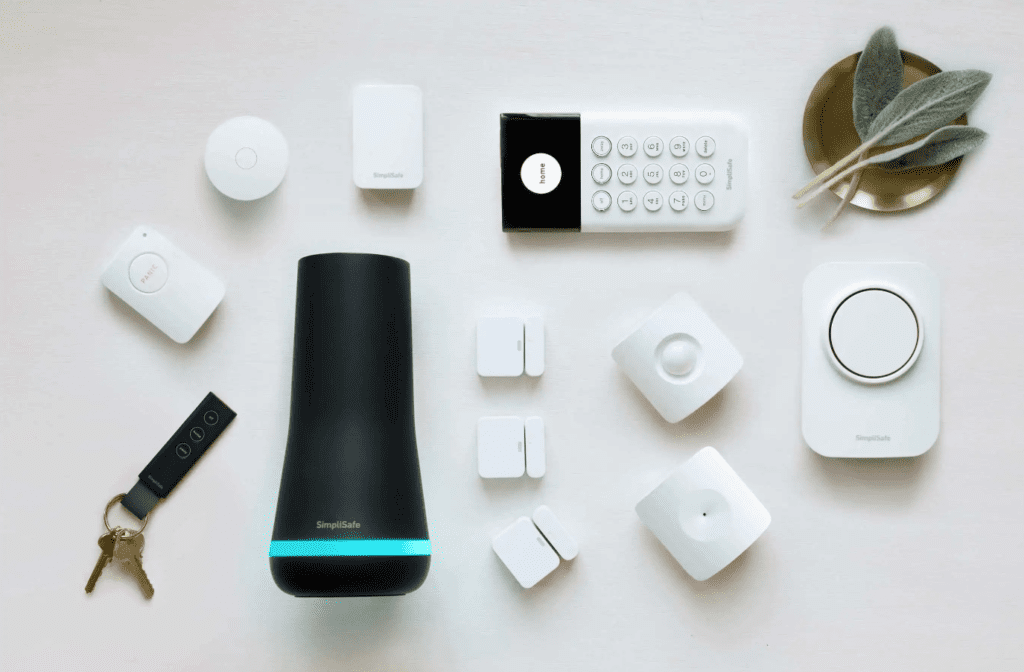
Why do some companies require long-term security agreements? How can others work without a contract? We will help you understand your various options.
About security prices
Home security ads emphasize monthly monitoring fees. Do other costs apply? Sometimes. Many of the industry’s best security systems require professional installation and/or activation. When companies have long-term contracts, they can build equipment costs into monthly monitoring fees. (These companies advertise free or low-cost devices, but in reality, the cost of the devices is subsidized with revenue from long-term monitoring.) In comparison, when companies have month-to-month monitoring plans If there are, they may charge a higher price for usage than before. . of protective equipment.
Security benefits without contract
The most obvious benefit of adding a home security system without long-term contracts is flexibility. If you are not happy with your security plan, or if your needs change, you can terminate the service without financial obligations. This includes avoiding the “small print” risks of some long-term contracts, which may allow for periodic rate increases and automatic renewals.
Another major advantage is the ownership of security devices. With long-term security companies, a customer may not own any of the equipment until their monitoring contract expires… but with fixed month-to-month plans, the customer owns the equipment. are The alarm system can continue to operate without professional supervision.
How to Cancel a Home Security Agreement
When signing up for their service, traditional home security companies typically require you to sign a minimum three-year contract. While they’re certainly not our favorite step in the home security journey, they’ve become a sort of necessary inconvenience for certain systems.
We’re seeing a huge increase in demand for no-contract systems from the likes of SimpliSafe, Cove, Ring, Frontpoint, and the industry’s best DIY security systems. These are also great systems for renters. They have become a great bridge for modern home owners and renters, namely for their convenience and mobility.
With these companies, you won’t have to wrangle more contracts than monthly alarm fees. Of course, experiences always vary. If you’re working with a major alarm provider like ADT, for example, we recommend reading ADT’s contract terms and cancellation policy thoroughly before signing up.
Alternatively, if you sign up with a third-party contractor or independent retailer, you’ll find that most installers will routinely replace the system for customers who, for one reason or another, , looking to switch providers instead of canceling altogether.
What are the features of the best home security systems without a contract?
Here are six things to consider when evaluating the best no-contract home security systems.
System size
Larger homes require more sensors and smart home features than smaller homes. So naturally, larger homes will need a larger home security system and smaller homes will need a smaller home security system.
Asset protection devices
Asset protection devices send alerts when assets are tampered with. It is not a make or break feature unless the homeowners have one or more valuable assets such as expensive jewelry or paintings.
Comprehensive protection
The best home security systems are more than just burglar alarms. They also offer sensors that can detect environmental hazards such as fire. Some even offer sensors that can detect when appliances aren’t working properly, thus providing huge cost savings for homeowners.
Equipment packages to suit any budget
Homeowners should choose the right combination of home security system features that fit their budget. Inflexible home security system packages have a price tag and limited options. They may also lack features that are important to the specific goals and needs of homeowners.
Personal security
Some of the best home security systems offer panic buttons that are ideal for seniors as well as people who live alone with no neighbors. These panic buttons are ideal for many personal safety hazards, including medical emergencies. For example, someone who has fallen down the stairs and broken their hip may be unable to call for help. If she is wearing a panic button on her wrist, she can simply press it and call for help. This is not a mandatory feature, but may be an option worth considering.
Smart home features
A home security system can turn an ordinary home into a smart home. There are special add-ons that allow the home owner to remotely control the home via smartphone (open/close doors or windows, turn on/off appliances, etc.). Some home security systems can also be integrated with Google Home and Amazon Alexa for voice command features.
The best home security system in the UK with no monthly fees
Best for low cost: Ring
Best for a range of subscription options: SimpliSafe UK
Best for offline service: Yale
The overall subscription-free security system with no monthly fees rings in at £219.99 for the base system. Ring’s advantage is that they stream video and push notifications to customer devices without charging a subscription for it. They charge a fee for recording video events, but it’s not required.
The brand with the best range of subscription options between free and professional monitoring is SimpliSafe UK, with systems starting at £158.38 for a four-piece kit. SimpliSafe is highly expandable and unlike Ring, they offer professional monitoring as an upgrade option. However, when it comes to the features of the free plan, they offer less than Ring and Yale.
Offline Chime is Yale’s best brand among burglar alarms only, offering extremely low prices and multiple configuration options for both online (IoT) and offline devices. Yale competes directly with budget brand alarms in hardware stores, but unlike smaller brands, Yale offers 24/7 support and professional installation options.
How much does a home security system cost without a contract?
There are generally five types of home security system fees that homeowners should consider:
- Activation fee
- Installation Fee
- Equipment Fees
- Monitoring fee
- Miscellaneous Fees
No-contract home security systems have an up-front fee, and monthly fees for these systems vary depending on the features a homeowner chooses to purchase, especially if professional monitoring is included. The initial cost of equipment can range from $100 to $2000, and may include a monthly equipment fee. Most home security systems allow homeowners to pay off some of these costs over an average of 36 months.

